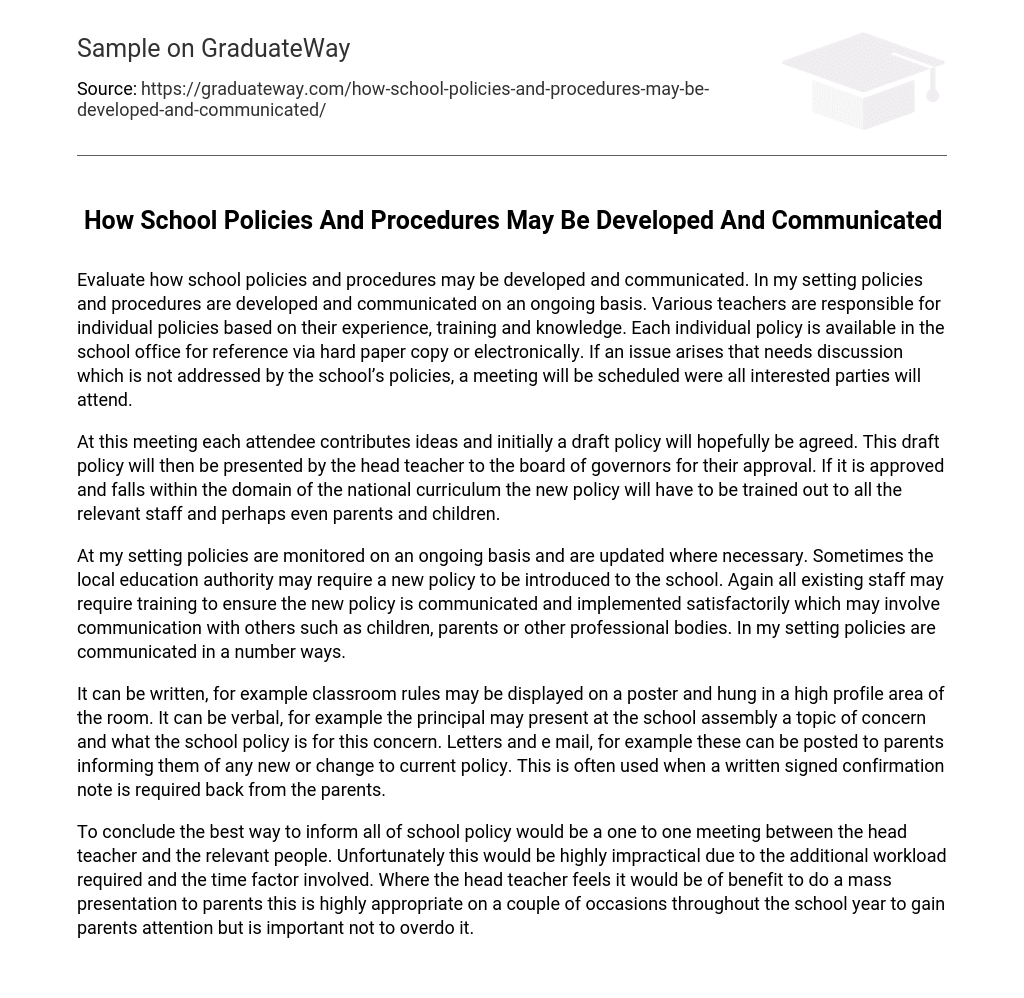In my setting, the evaluation of school policies and procedures is ongoing. Teachers are accountable for developing their own policies, drawing from their expertise, training, and understanding. All individual policies can be accessed in both hard copy and electronic formats at the school office. If a situation emerges that is not covered by current policies, a meeting will be arranged with all relevant parties in attendance.
During this meeting, all attendees will collaborate to generate ideas and reach agreement on an initial policy draft. Subsequently, the head teacher will deliver the draft to the board of governors for endorsement. If approved and aligned with the national curriculum, it is imperative to communicate and execute the policy among pertinent staff members, parents, and potentially children.
At my setting, policies are continuously monitored and updated as needed. There are instances where the local education authority may ask for the introduction of a new policy in the school. In such cases, all current staff may need training to effectively communicate and implement the new policy. This training may involve interacting with various parties such as children, parents, or other professionals. Policies are communicated in multiple ways in my setting.
The ways in which communication can occur within a school setting include various methods such as visual displays like posters showcasing classroom rules, announcements made verbally at assemblies by the principal regarding school policies, and written correspondence like letters and emails sent to parents to inform them of new or revised policies, often requiring a signed confirmation note in return.
In summary, the optimal approach for communicating school policy is through one-on-one meetings between the head teacher and appropriate individuals. However, this method is impractical due to increased workload and time limitations. Consequently, it is recommended that the head teacher occasionally address parents in a collective presentation during the academic year to ensure their engagement. Nonetheless, it is essential not to excessively rely on this strategy.





